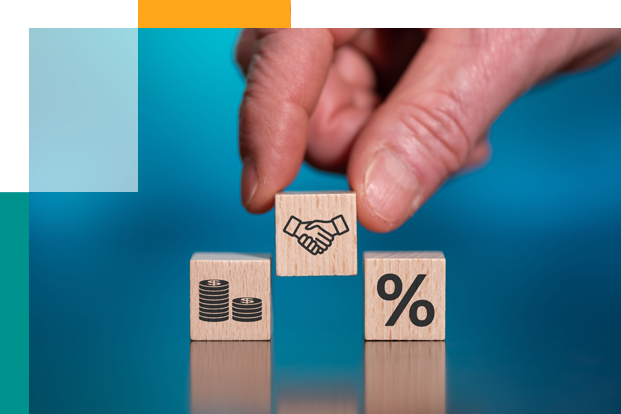Why Is Debt Yield Important to Commercial Lenders?

Nowadays, most commercial lenders are adopting the concept of debt yield to assess risk related to commercial loans. But the main problem is that even though the word is used often, many people, especially borrowers, are confused about what it means and its application. This is not surprising given that the word is most popular among commercial lenders.
Aside from that, the usual method that traditional commercial real estate lenders use to evaluate risk related to loan requests is the loan-to-value ratio (LTV), the loan-to-cost ratio, and the debt service coverage ratio (DSCR). So, we all understand where the confusion is coming from.
To make things easy, this article intends to explain why debt yield is important to commercial lenders and other important related aspects, such as its benefits, how borrowers can maximize it, and the risk associated with low debt risk.
What is Debt Yield?
Lenders used the method of debt yield to determine the risk associated with lending money to a borrower. By definition, it’s the evaluation of the amount of return a lender can collect if the borrower defaults on a loan and the lender have to foreclose on the property, a metric that determines the risk of a proposed loan. It’s also used to ensure low market cap, low-interest rate, or high amortization period didn’t inflate the loan amount.
How is Debt Yield Calculated?
To calculate it, you will divide the property’s net operating income (NOI) by the total loan amount.
The general formula is: Debt yield = Net Operating income (NOI) / Loan Amount.
For example, if a commercial property’s net operating income is $100,000 and the whole loan amount is $1,000,000, the debt yield would be $100,000 divided by $1,000,000, which equals 0.1 or 10%. The calculation is simple, but the lender must first determine whether the result is worth investing in or not, especially with the market condition, the type of property, the tenant health ratio of the property, and other factors.
What Is the Minimum Debt Yield?
The minimum debt yield for a loan is 10%. And the lower it is, the higher the risk; likewise, the higher it is, the lower the risk. So, in the example we have above, the lender has the minimum debt yield, which means he can take a loan of $1.5million. However, in some exceptional circumstances, some lenders may accept a debt yield of 9% or even 8%.
Why Is Debt Yield Important to Commercial Lenders?
Well, considering that low interest and extended amortization can easily skew other risk metrics like the loan-to-value ratio, debt yield will remain the same no matter a borrower’s monthly responsibilities. In addition, it gives a lender insight into how things can go wrong even before they start the whole investment. In fact, it has become essential to lenders because it helps them securitize fixed-income loans and is arguably getting increasing recognition from insurance company lenders. Aside from that, it also:
- Provides lenders with a tool that removes subjectivity
- Helps them navigate an inflated market
- It’s more secure for both lenders and buyers
- It’s less risky
Benefits of High Debt Yield for Lenders
Given that low debt yield is associated with higher risk, there is no doubt lenders will prefer high debt yield; some of the benefits include:
- Lower interest
- Compensation for increased risk
Risks Associated with Low Debt Yield
A low debt yield opens opportunities to leverage, but it still poses a higher risk. Below are a few risks:
Inflation
When it is low, economic factors are sporadic, and inflation occurs. The inflation can be due to exponential market prices, low-interest rates per loan, and increased debt payoffs. Money is more in circulation during inflation and as a result the value of money is low which leads to an increase in price. Thus, once inflation sets in, the market price increases, and the interest rate for a property reduce.
Low Debt Yield means High Interest
A low debt yield can affect the entire commercial loan sizing; this means that if it’s low, the lender is likely to put a high interest in the loan. And as a borrower, you might be skeptical about collecting a loan with high interest.
How Borrowers Can Maximize Their Debt Yield
Higher ratings in debt can simultaneously affect commercial real estate loans. Borrowers can use this opportunity to increase their debt yield.
While higher interest rates on commercial real estate loans can be destructive to a project’s financial returns, it also leads to another loophole for sponsors – the possibility of inferior loan profit. For a borrower needing maximum loan proceeds, the rising rate environment produces substantial headwinds that can include a reducing equity return and amassing to contribute extra money into a contract.
To alleviate some of this risk, a prospective borrower is expected to periodically spot-check their loan assumptions before approaching lenders for the loan request.
If it can’t be averted, it is adequate for a sponsor to promptly understand that they are short on loan earnings rather than receiving lender term sheets that fall below the desired loan amount. To maximize your debt yield as a borrower, you can do the following:
Go for a Short Tenure Loan
This is one of the main factors responsible for the interest you are supposed to pay. A short tenure loan means you are going to pay the loan early, so the debt yield will definitely be high.
Look for Better Deals
Another way of maximizing it is to look for better deals as a borrower. With a better deal, there are high chances you will get a high debt yield.
Look for Debt Yield from a Strong Lender
A good debt yield depends on the property type, current economic conditions, the strength of the tenant, and the strength of the guarantors. A lender that isn’t strong will likely give you a loan with high interest, which means low debt yield.
Use Debt Service Coverage Ratio (DSRC)
To have an accurate assessment of the potential loan and property support, you have to run through the Debt Service Coverage Ratio DSCR, amortization, and interest rate. The minimum DSCR a lender wants depends on how the economy as a whole is doing. Lenders may be more open and accepting of lower ratios if the economy is doing well.
Conclusion
As a lender, finding the right deals to finance may seem like a difficult task to do on your own. That is why we at Financelobby.com are willing to help and connect you with the best deals that meet your lending criteria. We are always committed to solving any challenge you may encounter during your commercial real estate financing. We exist to find you a perfect deal in the market so that you can close on them faster. Create your personalized lending profile or book a call with us to get more information.


